How To Drive External Traffic To Amazon Listings [GUIDE]
Last Updated on October 9, 2025 by Tanner Rankin
Key Takeaways:
How To Drive External Traffic To Amazon Listings? Well, for years, savvy sellers noticed when they drove external traffic to Amazon, their SEO and PPC campaigns improved. Now, since Amazon updated its algorithm from a9 to a10 it became common knowledge that you need to drive external traffic to Amazon product listings.
Driving external traffic to Amazon product listings not only drives sales and boosts on Amazon SEO but also drives down Amazon PPC CPC costs and drives up impressions.
From this comprehensive guide, you will be able to drive Amazon sales quickly & easily by getting everything you need to know on how to drive external traffic to Amazon.
Table of Contents
In over 10 years as an eCommerce Fractional CMO, Amazon Consultant, and eCommerce Consultant, not to mention CEO, I’ve seen just about every mistake and the lessons from them. That means you get all the learnings without the scars.
If one thing is true, it gets more difficult and complex to increase sales on Amazon year over year.
With the update to the Amazon algorithm, Amazon now states the importance of driving external traffic to Amazon product listings.
This was something that only savvy sellers knew from their own testing, but now, it’s becoming common knowledge.
Yet, for many reading this, the concept of driving external traffic to Amazon product listings is entirely new.
That’s why I put together the most in-depth guide on how to drive external traffic to Amazon that you can use TODAY to increase sales on Amazon quickly whether you’re an Amazon Seller Central seller, Amazon Vendor Central seller, using Amazon FBA, FBA Small and Light or selling Amazon B2B.
Why Do I Need To Drive External Traffic to Amazon?
I particularly remember conversations I used to have with my Amazon Consulting Services clients before driving external traffic to Amazon product listings was known to be part of Amazons’ algorithm.
Me: “The reason we’re seeing this plateau in results is that we need to drive external traffic to Amazon so we can boost our SEO and drive our Amazon PPC performance.”
Client: “Why would I want to drive external traffic to Amazon? They have enough traffic. Plus, if I’m going to use resources to drive traffic, it’s going to be to my own website because I get more customer data and our margins are better.”
I would regularly use two epiphany bridges to help each of them get to the other side where they stood to benefit immensely by driving external traffic to Amazon.
- Same as Brick and Mortar Retail Stores: “Think of every conversation you’ve ever had with a brick and mortar retail buyer. When attempting to earn your way into their stores, they ask: “How are you going to advertise and drive foot traffic into our stores?” Amazon is no different.”
- The Rising Tide Raises All Ships: “There are over 197 million shoppers on Amazon every month, with their payment information ready to buy products. By having your products appear prominently on Amazon, you increase your legitimacy and perceived value. What’s more, consumers trust buying on Amazon more than a 3rd party website. That’s why conversions on Amazon are markedly higher than on eCommerce websites. By selling to consumers on Amazon, you earn the opportunity to get future sales on your website by providing a great product experience. It’s a far easier and cost-effective path.”
From there, it was smooth sailing and we were back to our regularly scheduled program of driving sales.
What’s more, did you know that the majority of sales for products appearing on the 1st page of Amazon search results don’t originate on Amazon?
A shocking fact that most Amazon sellers may not know is:
Most Amazon Sales for most brands don’t originate on Amazon.
In other words:
- Customer visits Amazon’s website and types in a keyword.
- Customer clicks on an ad or organic search result.
- Customer buys the product.
That’s NOT where most of the sales for products that are selling well happen.
If you run most best-selling products on Amazon through a tool like Sellzone, you will see most of their sales originate off Amazon as referrals from blogs, YouTube & more.
Take a look…
Have a look at the difference in impressions between Referral Traffic and Amazon.
That’s a difference of about 357 million impressions.
In other words, this K Cup brand is generating 363.2 million impressions each month just from their Amazon Influencer Marketing send traffic to them on Amazon vs. only 6 million on Amazon.
The reason for this is simple.
Customers visit the #1 and #2 search engines in the world (Google and YouTube respectively) to answer questions, alleviate pain points and fulfill desires.
Here’s how referral external traffic to Amazon works:
- The customer visits Google or YouTube to answer a question, alleviate a pain point or fulfill a desire.
- EXAMPLE: “How to treat and prevent bedsores?”
- EXAMPLE: “What’s the best organic makeup for organic skin?”
- EXAMPLE: “Beginners guide to cold weather camping”
- The customer consumes the article or video and takes the recommendations of the content creator by clicking on the Amazon link and buying the product(s) on Amazon.
That external Amazon traffic path has been around since 1996 when Amazon launched the Amazon Associates Program, in other words, their affiliate program.
That’s over 25 years!
This is not a new thing.
You can actually track the progression that led up to Amazon announcing it in the Amazon A10 algorithm at the end of 2020.
- For years, savvy sellers noticed that when they drove external traffic to their Amazon product listings, their Amazon SEO keyword rankings improved, their CPC went down and their ad impressions went up.
- In 2018, Amazon started beta testing Amazon Attribution, a program to help track the sales of external traffic with a select group of Amazon Sellers who were registered through the Amazon Brand Registry. Then, in 2019, they rolled it out to all.
- Not long after in 2020, Amazon announced that external traffic to Amazon product listings had a direct impact on sellers’ Amazon Marketplace visibility.
- Then in 2021 Amazon launched the Brand Referral Bonus Program where Amazon will reimburse up to 10% of qualified sales from external traffic to Amazon product listings when using an Amazon Attribution link.
You can easily see how this played out:
- Many started picking up on the impact of driving external traffic to Amazon product listings.
- Amazon gave Amazon Sellers a tool to track results from driving external traffic to Amazon product listings.
- Then Amazon announced external traffic is part of their algorithm
- Lastly, Amazon provided Amazon Sellers with a monetary incentive/kickback to drive sales from external traffic to Amazon.
In other words, Amazon likes it when you send external traffic to Amazon and they will reward you for it.
So, you may be asking at this point, what do I get out of driving external traffic to Amazon product listings?
A lot.
Benefits of Driving External Traffic to Amazon
The benefits of driving external traffic to Amazon product listings are significant.
For anyone on the fence about whether to drive traffic to your Amazon product listings or your own eCommerce website, the answer shouldn’t be one or the other, it should be both.
Plus, for anyone where Amazon is your ONLY channel, this should be considered to be minimum viable effort.
Here’s why…
You Can Track Conversions:
I had mentioned that for years, savvy brands were driving external traffic to their Amazon product listings via methods like:
- Facebook & Instagram Ads
- Pinterest Ads
- Email Lists
- Organic Social Media Posts
- & more
The missing piece up until 2019 was that you couldn’t track conversions.
You can now.
Enter the Amazon Attribution Program.
With Amazon Attribution, you can track:
- Click-throughs
- Total Detail Page Views
- Total Add To Carts
- Total Purchases
- Total Product Sales
Here’s how it works:
- Register for Amazon Attribution
- When setting up an Amazon external traffic campaign, create your link in Amazon Attribution
- Insert the Amazon Attribution link into your Email, Facebook, Instagram, Pinterest. etc campaign instead of a simple link to your Amazon store or product detail page.
- Now, when the customer lands on your Amazon listing, Amazon can track the results.
- You can view the reports in your Amazon Attribution dashboard within the Measurement & Reporting section of the Amazon Advertising Console.
Plus, when using Amazon Attribution, you’re eligible to get cashback.
Here’s how…
You Get Up To 10% Back:
For some time, one of the challenges of driving external traffic to Amazon product listings was the margins.
Amazons’ solution?
The Brand Referral Bonus Program.
The Brand Referral Bonus Program is Amazon’s answer to the objection:
But my margins are way better on my website.
This takes the sting out of that.
How it works:
- You need to be a Brand Registered brand.
- Enroll in the Brand Referral Bonus Program.
- Build links to your product listings in Amazon Attribution.
- Use the Attribution links in your Amazon external traffic campaigns.
- When a sale happens from your external traffic, you get up to 10% back.
That’s powerful.
Amazon now offers brands a program to reimburse them for something they would be doing anyway.
Now, if that wasn’t enough, there’s more.
You’ll get more sales.
You Will Convert More:
While this one is common knowledge that you don’t need my Amazon Consulting for, it is still just as powerful.
You’re going to get more volume on Amazon.
Here’s why…
An average Amazon Conversion rate is 10-15%
An average eCommerce website conversion rate is 2%.
- You have to work harder to drive traffic to your website than you do Amazon.
- You have to work harder to earn a customer’s trust on your website.
- Customer acquisition costs are markedly higher on a 3rd party website.
Yet, you may still be saying: “But I can’t get all the customer data when I direct them to Amazon.”
Yes, you can.
You Can Still Get The Customer Data:
Have you ever heard of Amazon Landing Pages?
If not, you’re going to want to keep reading.
You CAN still get customers’ email addresses, analytics and more.
Here’s how:
- You run the ads and campaigns you would normally run.
- Instead of sending the customer to your Amazon Product Listings directly, you send them to a special landing page on your website.
- Collect the customers’ email addresses and data by offering them a promo code in exchange for their email.
- Once they enter their email, then send them off to Amazon with your Amazon Attribution link.
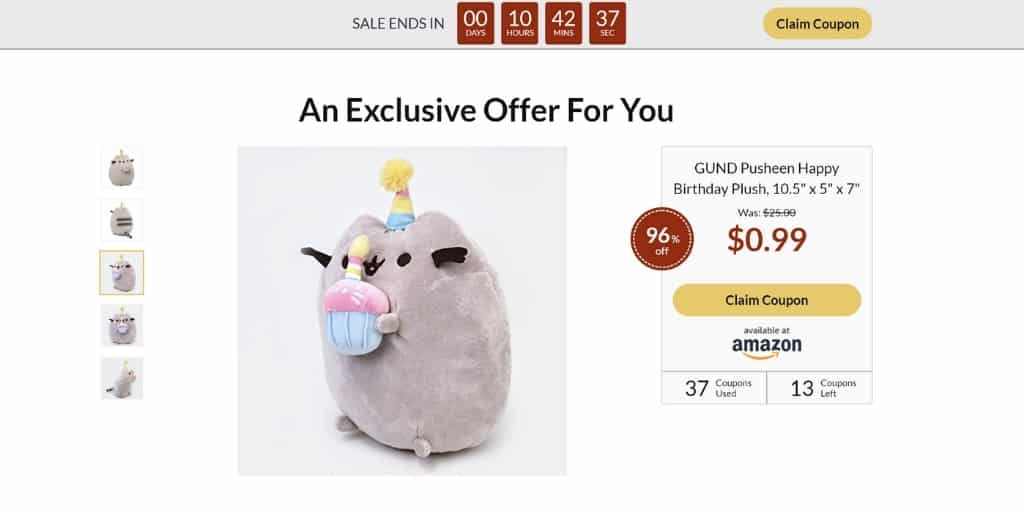
If you’re saying “I don’t know how to build landing pages.” then Landing Cube can help you with that.
But that’s not all, if you’re not good with websites, you can still show up on the first page of Google.
Get Your Products on the 1st Page of Google:
If you’ve found it difficult to get your website on the first page of Google, I have great news for you.
You can still get your products on the 1st page of Google.
Look at this…
That’s a Google search for “t shirt folding board”.
You’re looking at the top results right beneath the ads.
By driving external traffic to your Amazon product listings and leveraging Amazon SEO best practices, you can get your Amazon product listings on the first page of Google where you can’t get a website to the first page of Google without investing heavily in SEO.
Speaking of SEO…
Amazon SEO:
Driving external traffic to Amazon product listings boosts Amazon SEO.
In other words, by sending traffic from off Amazon onto Amazon specifically for your products, it will help your products rank higher in Amazon product search results.
Not only is external traffic a ranking factor, but as you dig deeper into what it does for you, it actually checks a few Amazon SEO boxes:
- Boosts impressions (which are also a ranking factor)
- Drives conversions (which is also a ranking factor)
What’s more, it also helps your Amazon PPC campaigns.
Amazon PPC:
Have you ever noticed that when you get really good at Amazon SEO, your Amazon Advertising campaigns thrive?
That’s not an accident.
Amazon will show the most relevant ads that are the most likely to result in a sale.
The CPC and what you’re willing to bid is a factor, but not the ONLY factor.
If you’ve ever spent a lot of time on keyword research and loaded up Amazon PPC campaigns with those same keywords only to look at the campaign a week later and see the dreaded “-” in the keyword column, you know what I mean.
If Amazon doesn’t believe you will likely convert for the keyword, you’re either going to:
- Pay a lot to show up for said keyword.
- Or not show up at all.
You can fix that.
You can educate Amazon that you are relevant for your subject matter by driving external traffic to your Amazon product listings.
So, not only does driving external traffic to Amazon product listings help drive sales on Amazon, but it also means that you can still increase sales on Amazon even if you’re having a difficult time showing up in Amazon Ads and Amazon SEO.
You read that right, in a sense, it takes impressions to get impressions with Amazon SEO and Amazon PPC.
The good news?
The impressions do not have to originate on Amazon, you can still get impressions if you’re struggling with your Amazon SEO and Amazon PPC by driving external traffic to your Amazon product listings.
At this point, you may be asking “how do I driver external traffic to Amazon?”
This is how…
How To Drive External Traffic to Amazon Product Listings
Generally speaking, driving external traffic to Amazon product listings is no different than driving traffic to your website.
Or, if you’re a private label seller and haven’t done this before, it’s fairly straightforward is as easy to do as Amazon Posts.
What’s more, you want to make sure you give yourself the best chance to convert the external Amazon traffic.
- You can do this by making sure you have enough Amazon product reviews by reading this article: How To Get Amazon Product Reviews.
- Have a well-optimized Amazon product listing by using Amazon Listing Optimization.
That said, I’ve ranked the most popular and powerful methods to drive external traffic to Amazon product listings by ease of execution.
1) On Amazon PPC Advertising:
- Display Ads Retargeting
You’re likely already familiar with the Amazon Advertising Console which is why this sits in the #1 spot on the easy scale of how to drive external traffic to Amazon.
You can drive external traffic to your Amazon product listings right from the Amazon Advertising Console.
Here’s how:
Simply start an Amazon Advertising Campaign and select Sponsored Display.
From there you can target customers on blogs, social media and elsewhere off of Amazon to bring them back to your product listings on Amazon.
You can target customers who:
- Have viewed your product
- Have viewed similar products
- Past purchases
If you need help with your Amazon Advertising Strategy, I’d encourage you to give my article a read or check out my Amazon Consulting Services.
Speaking of advertising…
2) External Amazon PPC Advertising:
For years, as mentioned earlier, the minimum viable effort for Amazon sellers consisted of running PPC campaigns via:
- Google Ads
- Facebook & Instagram Ads
- Pinterest Ads
Particularly interesting to brand registered brands now is the Brand Referral Bonus program mentioned earlier where depending on your product category you can earn up to 10% back which can go a long way in offsetting the customer acquisition costs.
What’s more, if you’re used to the Amazon Advertising Console, you will likely be able to navigate your way around the others as most of the verbiage and layouts are similar.
- Campaigns
- Ad Groups
- & more
There are generally different types of keywords that consumers tend to use on Google or Pinterest for example rather than on Amazon, but the general ideas are the same.
Now, beyond advertising, pound-for-pound, number 3 is the most powerful way to drive external traffic to Amazon product listings.
3) Amazon Influencers:
Did you know that Amazon Influencers have been around since 1996 when Amazon launched the Amazon Associates program?
Accordingly, Amazon Influencers are responsible for driving 37% of Amazons’ external traffic.
When you run Amazon.com itself through common SEO software, you can see that regularly in the top 5 sources of traffic referring back to Amazon are Blogs, YouTube and Twitch.
The reason why they’re so effective is simple, people go to the #1 and #2 search engines in the world (Google and YouTube respectively) to accomplish 1 of 3 goals:
- Answer questions
- Alleviate pain
- Fulfill desire
All of the 3 innately have product recommendations in them.
That’s why according to Neil Patel:
For every dollar you spend on Influencer Marketing, statistics show that you’ll average a $23 ROI. Most ROI shoots for a 5:1 ratio, so you can see just how wild these statistics really are.
Plus, later on, in this list you will see some marketing mechanisms that will require you to build up a following on social media or build up subscribers on an email list.
Building your own following takes time, effort and skill.
With Amazon Influencers, you can skip the line and get your products featured with Amazon Influencers who already have all of that.
Amazon Influencers come in all shapes and sizes for brands of all shapes, sizes and budgets.
You can find Amazon Influencers that fit your resources. From very small but hyper-engaged audiences to medium, large & massive, the Amazon Influencer search finds them instantly.
Amazon Influencer Size Tiers:
- Nano
- Micro
- Mid-Tier
- Macro
- Mega
Plus, Amazon Influencers create content on all the most popular platforms where you customers live daily such as:
- Blogs
- YouTube
- Social Media
- Amazon Live
- Twitch
- Podcasts
- & More
If you need help finding Amazon Influencers, Referazon is the leading Amazon Influencer Marketing software company for brands selling on Amazon.
With Referazon you can:
- Find Amazon Influencers
- Manage Amazon Influencer Relationships
- Track results
Referazon achieves this through a powerful Amazon Influencer search engine, a robust database of Amazon Influencers and an Amazon Influencer CRM.
You can find Amazon Influencers on Blogs, YouTube and Social Media platforms like Instagram and TikTok.
As an Amazon Seller Consultant, I highly recommend it.
Speaking of social media, you have a great way to drive external traffic to Amazon product listings that you’re likely already using daily.
4) Organic Social Media:
If you have a brand and you’re selling on products, the chances are slim to none that you are not promoting your product on Social Media.
To use social media to drive external traffic to Amazon products you want to think about the following criteria:
- Are my customers active on this social media network?
- Is it easy to share clickable links on this social media network?
- Is this the best format to showcase the benefits and features of my product?
Some of the more popular social media networks that do the best job at meeting the above criteria as well as driving traffic to Amazon are:
- Twitch
- TikTok
Remember, your social media content should follow the Pareto rule.

Get The Full List of B2B Certifications
Learn Every Amazon B2B Certification To Drive Sales Right Now
Share 80% value and informational with the other 20% being promotional.
There is another great way to drive external traffic to an Amazon product listing where you should follow the 80/20 rule as well.
5) Email Marketing:
Email marketing is a powerful way to drive external traffic to Amazon product listings because it is one of the few traffic sources that you can consider as “owned traffic”.
In other words, it doesn’t cost you a penny to market to your email list following other than your monthly software subscription.
SEO is not guaranteed.
PPC traffic goes away when you turn off the ads.
Organic Social Media is at the mercy of algorithms.
Email subscribers and next up, Facebook Group members are yours.
To drive external traffic to Amazon product listings from your email list, you want to get on a cadence of around twice a month, promoting your products to your subscribers.
This can be more if you are doing product launches, sales, flash sales, etc.
Speaking of Facebook Groups…
6) Facebook Group:
Unless you’ve been living under a rock in the marketing world, building a community around your brand has been one of the more powerful ways to drive repeat business, increase average order value and lifetime revenue per customer.
You may already have begun creating a Facebook Group around your brand.
If you haven’t yet, now is the time.
Say you sell camping products.
You would create a Facebook Group of camping enthusiasts where you would share group member-only deals, sales, promotions, pre-launch opportunities and more to drive external traffic to your Amazon product listings a few times a month.
With that said, it’s worth addressing the most common Amazon external traffic frequently asked questions.
Frequently Asked Questions
Stop guessing with inexperienced in-house teams or renting results from agencies & freelancers. Start owning your growth.
Your teams drift into chaos when they operate in silos. You need a Marketing Operating System to govern them.
Whether you need an Amazon Consultant to protect margins, an eCommerce Consultant to architect your roadmap, or a Fractional CMO for eCommerce to orchestrate the execution, I install the Brand Source OS—your single source of truth for AI, strategy, and alignment.
Get a quick free consultation.




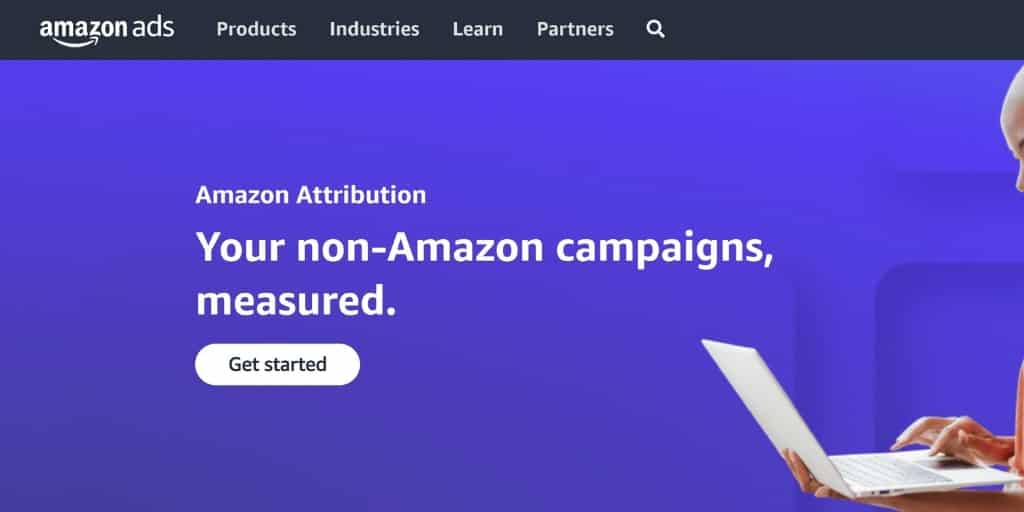
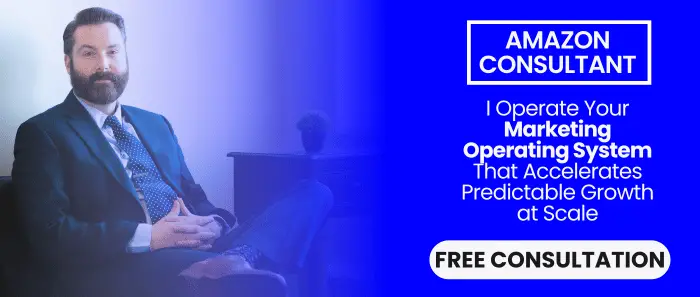
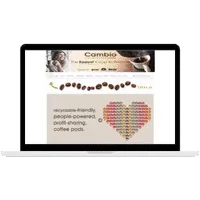


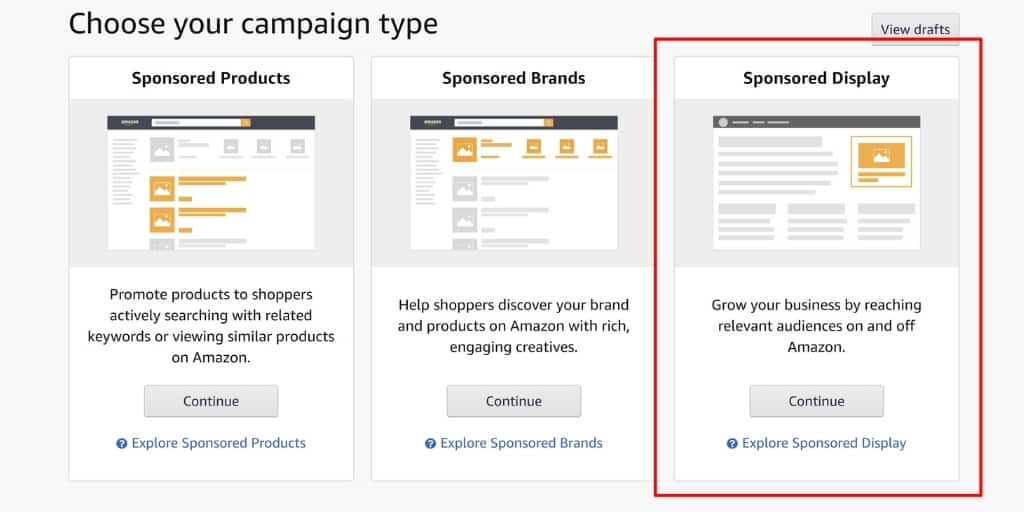


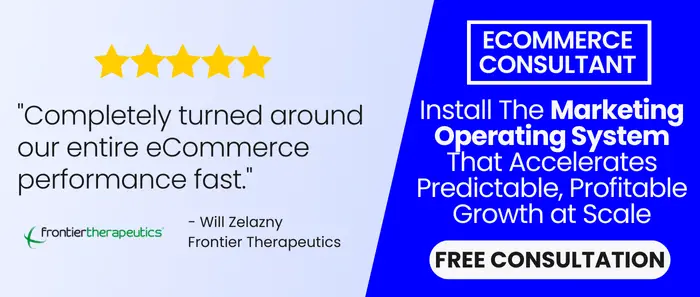
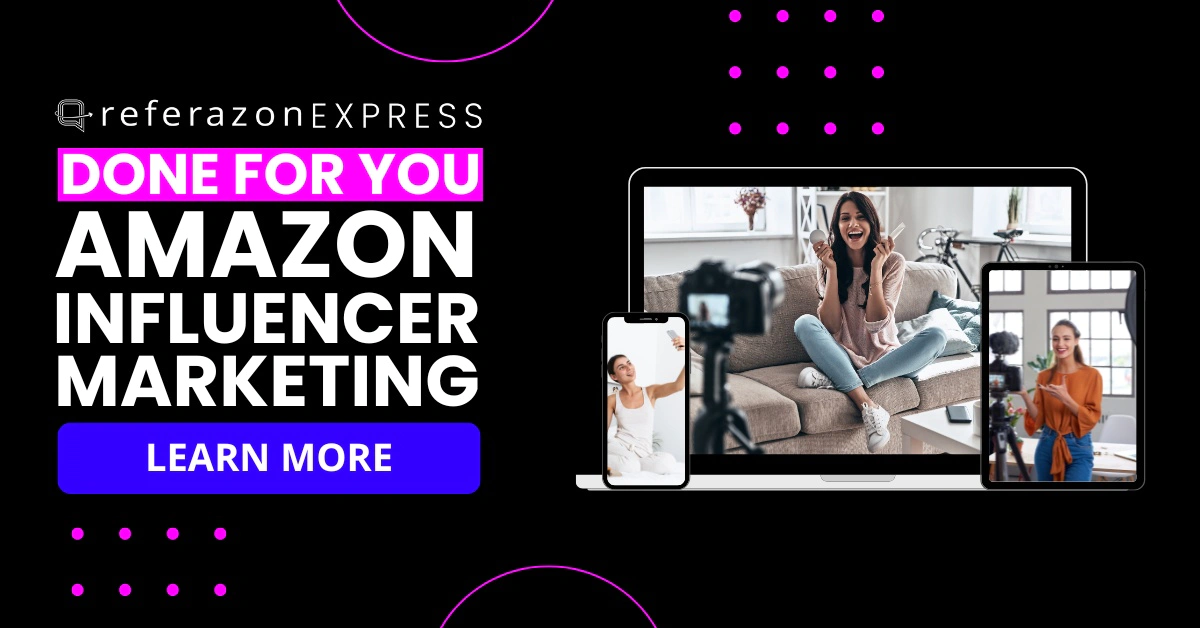
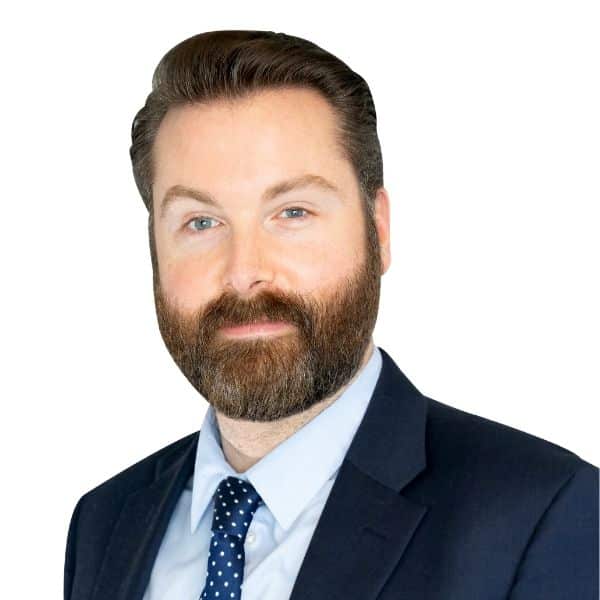

![How to Switch From FBA to FBM [Step By Step]](https://www.sourceapproach.com/wp-content/uploads/2025/07/How-to-Switch-From-FBA-to-FBM-The-Source-Approach-Amazon-Consultant-eCommerce-Consultant-Fractional-CMO.png)



![Amazon Storefront Design Templates [EXAMPLES]](https://www.sourceapproach.com/wp-content/uploads/2023/11/Amazon-Storefront-Templates-Source-Approach-Amazon-Consultant-eCommerce-Consultant-Fractional-CMO.png)

